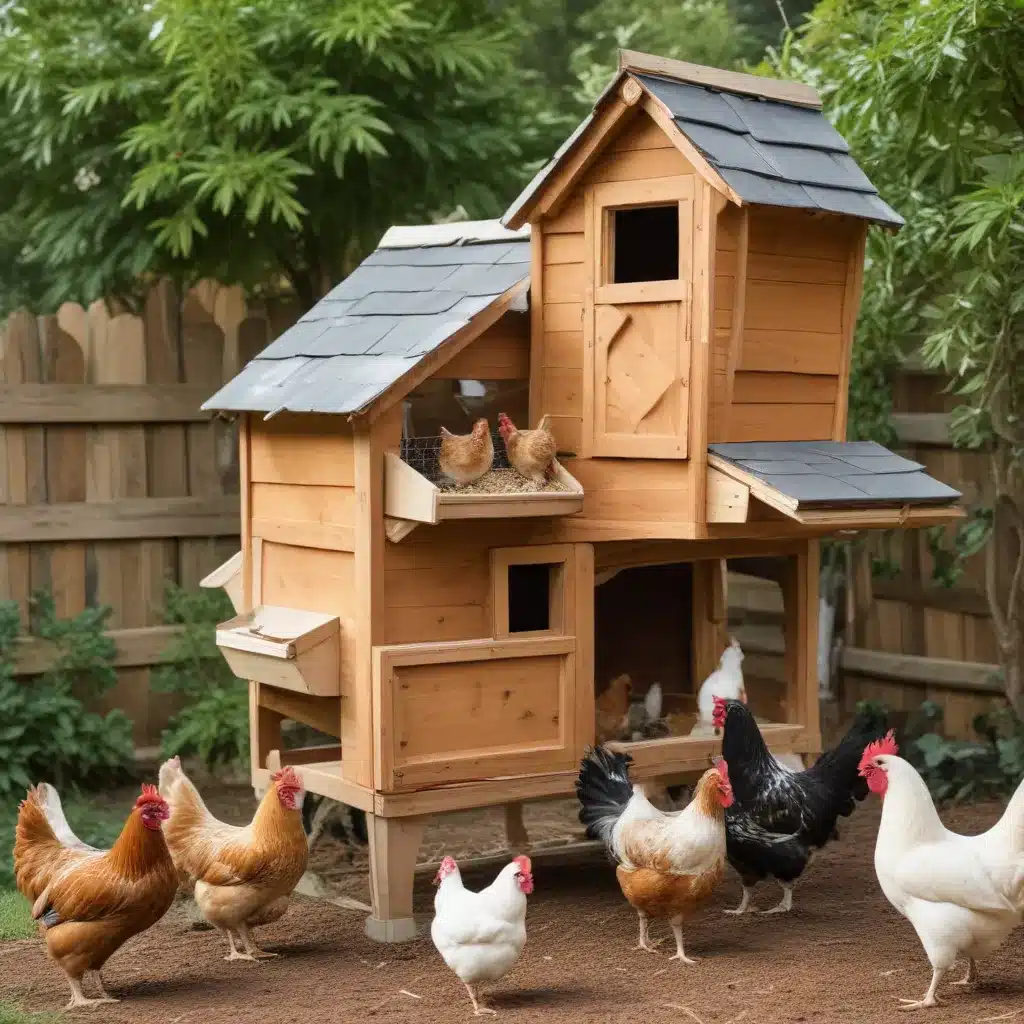
Are you dreaming of a flock of your own feathered friends? Raising backyard chickens can be an immensely rewarding experience, providing your family with a steady supply of fresh eggs and endless entertainment. However, before you dive into the world of chicken keeping, it’s crucial to understand the key aspects of coop design and proper chicken care.
Chicken Coop Design
Coop Size and Layout
The size of your chicken coop will depend on the number of birds in your flock. As a general rule, you’ll need about 4 square feet of coop space per standard-sized bird. For a small backyard flock of 3-5 chickens, a coop measuring 6×8 feet should provide ample room. Remember to also account for a spacious outdoor run, which should offer an additional 10 square feet per bird.
When designing the layout, consider the chickens’ natural behaviors. Provide designated nesting boxes (one per 4-5 hens) and elevated roosting bars that offer at least 8-10 inches of space per bird. Arrange the coop to allow for easy cleaning and egg collection, with access points that make it simple to tend to your flock.
Construction Materials
The materials used to build your chicken coop can have a significant impact on its durability, insulation, and overall functionality. Opt for sturdy, weather-resistant woods like cedar or pressure-treated pine. Avoid using plywood, as it can quickly deteriorate in the elements. For the roof, consider a metal or asphalt shingle option, which will protect your flock from the rain and snow.
Ventilation and Insulation
Proper ventilation is critical for maintaining a healthy coop environment. Incorporate windows, vents, or even a roof vent to ensure a steady flow of fresh air. During the colder months, insulate the walls and ceiling to retain warmth and shield your chickens from harsh winter conditions. Use materials like foam boards, reflective foil, or even straw bales to create an efficient barrier.
Chicken Care
Feeding and Nutrition
Providing your chickens with a balanced diet is essential for their overall health and egg production. Layer feed, formulated with the right nutrients, should make up the bulk of their diet. Supplement their meals with a variety of scratch grains, fresh vegetables, and even live insects to encourage natural foraging behaviors.
Always ensure your flock has access to clean, fresh water. Consider adding electrolyte supplements to their drinking water during times of stress or extreme weather conditions.
Health and Wellness
Keeping a close eye on your chickens’ health is crucial to their well-being. Regularly inspect your flock for signs of mites, lice, or other parasites, and be prepared to treat any issues promptly. Maintain a clean coop and provide a designated dust bath area to help your chickens groom themselves and keep pests at bay.
Stay vigilant for any signs of illness, such as lethargy, diarrhea, or decreased egg production. Consult with a veterinarian or experienced chicken keeper to ensure you’re providing the best possible care.
Egg Production
Backyard chickens can be excellent egg-layers, with most breeds producing about 4-5 eggs per week. The amount of eggs your flock produces will depend on factors like breed, age, and environmental conditions. To encourage consistent egg-laying, provide your chickens with 14-16 hours of daylight, either naturally or through supplemental lighting.
Collect eggs regularly, storing them in the refrigerator to maintain freshness. Don’t forget to provide your hens with a comfortable, private nesting area to encourage them to lay their eggs in the coop.
Chicken Breeds
When it comes to selecting the right chicken breeds for your backyard flock, consider your family’s needs and preferences. Egg-laying breeds, such as Rhode Island Reds, Australorps, and Orpingtons, are popular choices for their consistent egg production. Dual-purpose breeds, like Wyandottes and Plymouth Rocks, offer both eggs and meat. For a more ornamental touch, Silkies and Bantams can add a delightful flair to your flock.
Regardless of the breeds you choose, be sure to research their individual characteristics, housing requirements, and temperaments to ensure they’ll thrive in your backyard environment.
Predator Protection
One of the biggest challenges for backyard chicken keepers is safeguarding their flock from predators. Secure your coop with sturdy fencing, hardware cloth, and a locked door to deter unwanted visitors. Consider motion-activated lights or predator deterrents to create an additional layer of protection.
When allowing your chickens to free-range, be vigilant and provide ample cover and hiding spots to keep them safe from aerial predators. Supervise your flock during their outdoor excursions, and always ensure they’re safely back in the coop before nightfall.
Chicken Behaviors
Observing your chickens’ natural behaviors can be both fascinating and informative. Flock dynamics, with a clear pecking order, are essential to understand for maintaining a harmonious backyard flock. Provide designated nesting boxes and elevated roosting bars to cater to your chickens’ instinctual needs.
One of the most delightful chicken behaviors to witness is dust bathing. Offer your flock a dedicated area filled with a mix of dirt, sand, and even diatomaceous earth to allow them to groom themselves and keep pests at bay.
Raising backyard chickens can be an incredibly rewarding experience, providing your family with fresh eggs, endless entertainment, and a deeper connection to the natural world. By understanding the key aspects of coop design and proper chicken care, you’ll be well on your way to establishing a thriving flock of feathered friends. Remember to consult with experienced chicken keepers, seek guidance from reliable resources, and most importantly, enjoy the journey of becoming a backyard chicken enthusiast!


